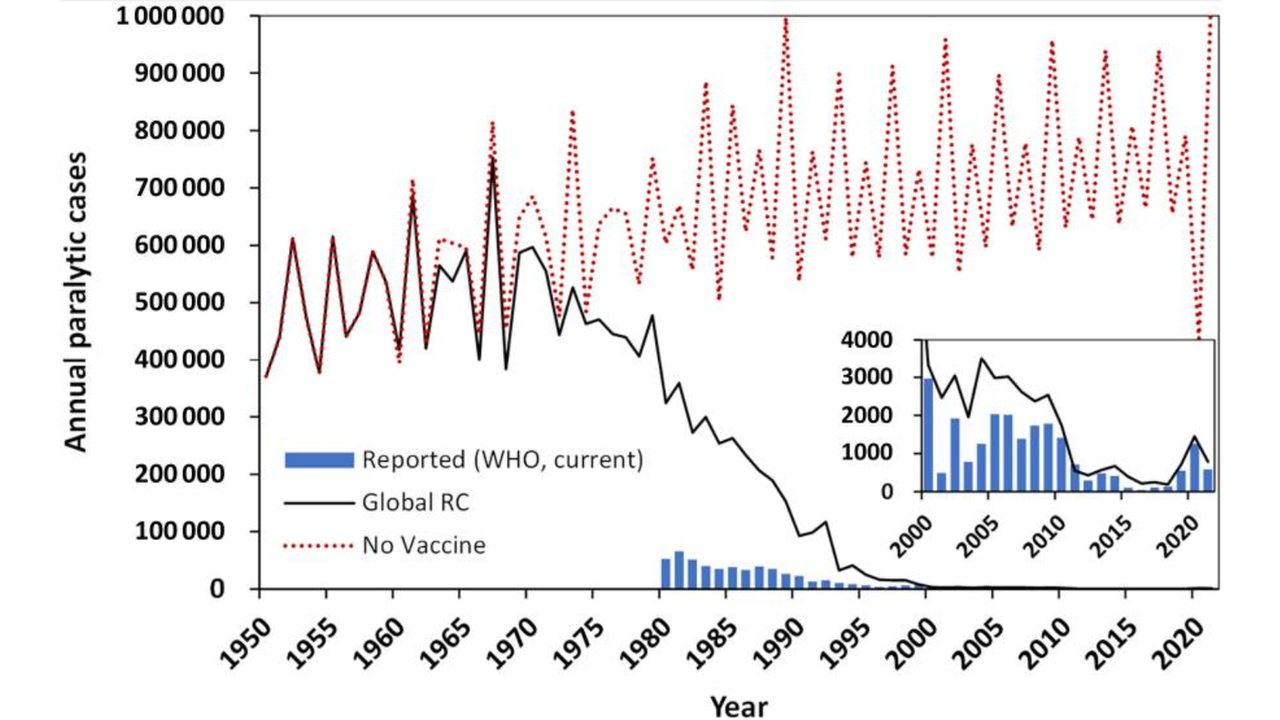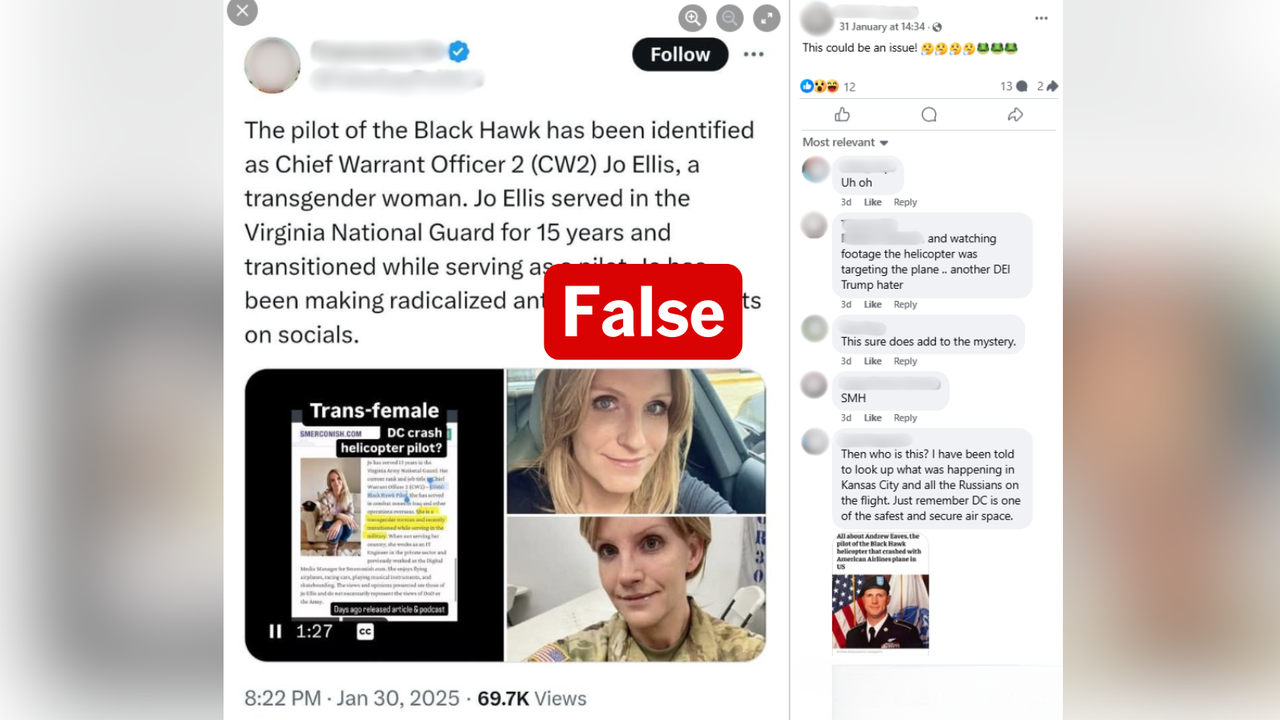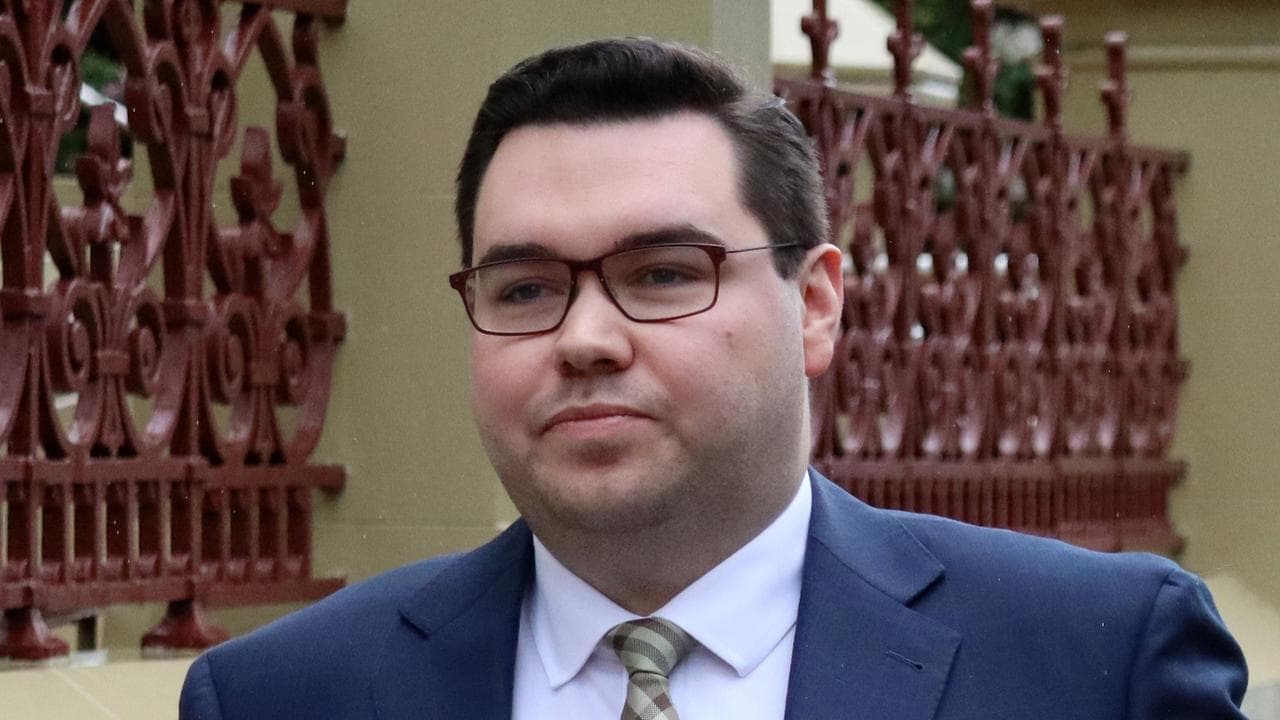WHAT WAS CLAIMED
Vaccines are not responsible for the global fall in paralytic polio cases.
OUR VERDICT
False. Experts say the rapid decrease of cases was due to the introduction of vaccines.
AAP FACTCHECK - Vaccines are responsible for the rapid decline in paralytic polio cases worldwide, despite claims made to the contrary.
Cases of paralytic wild (naturally occurring) polio decreased significantly following the introduction of the vaccine in the 1950s and, since a global immunisation push in the late 1980s, have reduced by more than 99.9 per cent.
The claim appears in a Facebook post featuring a clip from The Joe Rogan Experience podcast with guest Suzanne Humphries, who has been fact-checked before.
"What the facts line up to show you is that polio is still here," she says, disputing the medical consensus that polio vaccines have helped eliminate polio across much of the world, including Australia.
She goes on to suggest that changes in diagnoses and polio definitions have given a false impression of the disease's current status.
"The playing field, the goalposts, everything was changed," she says, "so that despite the fact that there was more paralytic polio in the years after that vaccine was introduced, they were able to show a complete cascading drop of paralytic polio simply because of the way they changed the definitions of what polio is and what could cause it."
Experts, however, told AAP FactCheck the vaccine directly resulted in the near eradication of the disease.

Polio, or poliomyelitis, is an infectious disease caused by the poliovirus. While most people only experience mild symptoms, a small percentage of people with polio experience irreversible paralysis, called paralytic polio.
Bruce Thorley, chief investigator for Australia's national polio surveillance program, said there has been a significant decrease in polio cases worldwide following the introduction of a vaccine in the 1950s.
He pointed to World Health Organization (WHO) estimates, which suggest that since the launch of the Global Polio Eradication Initiative (GPEI) in 1988, wild polio cases have reduced by more than 99.9 per cent, from about 350,000 cases worldwide to just six reported cases in 2021.
Associate Professor Thorley said between 1917 and 1955 in Australia there were more than 22,000 cases of paralytic polio recorded.
The inactivated polio vaccine injection (containing killed strains of the virus) was introduced in 1956 and the oral vaccine (containing a live but weakened virus) in 1966.
In the 16 years to 1972, more than 2500 cases were recorded but, since 1972, there have been only seven cases of polio notified in Australia.
AAP FactCheck contacted Ms Humphries for evidence to support her claim.
Roman Bystrianyk, co-author with Ms Humphries of the self-published book Dissolving Illusions: Disease, Vaccines, and the Forgotten History, responded by pointing to the title's chapter on polio.
One of their central arguments is that stricter diagnostic criteria arrived shortly after the vaccine was introduced in the 1950s, and that previously paralysis was uniformly attributed to poliovirus even when it was likely caused by a multitude of things.
In particular, Ms Humphries says in the podcast, patients weren't specifically tested for the virus prior to the vaccine.
Paralysis caused by other conditions, therefore, such as Guillain-Barre Syndrome (GBS), Coxsackievirus (which causes hand, foot and mouth disease) and even poisoning from the use of toxins such as DDT, lead and arsenic, were incorrectly classified as polio cases, thus inflating figures.
Paul Griffin, an infectious diseases expert at the University of Queensland, said it's true that the way polio has been diagnosed has changed with technology.
Professor Griffin said the virus was isolated in the early 1900s, which first enabled detection through viral culture-based methods, but the process had poor sensitivity and wasn't used widely until much later.
There were further improvements to diagnoses around the release of the vaccine in the mid-1950s, with improvements to the cell lines in which the virus could be grown, he said.

Pediatrician Vincent Iannelli, who runs vaccine myth-debunking website Vaxopedia, points out that contrary to Ms Humphries' claim, if a sudden change in polio diagnosis was the reason case numbers declined, then numbers should have dropped and then remained at the same level.
But they continued to decline into the 1960s.
Dr Iannelli referred to reported paralytic polio cases in the US, which declined from 13,850 cases in 1955, the year the inactivated polio vaccine was introduced, to 7911 cases in 1956 and 2499 cases in 1957.
This was followed by another sharp decline from 2525 cases in 1960 to 988 cases in 1961, after the introduction of the oral polio vaccine.
Dr Iannelli also said conditions such as GBS have very different signs and symptoms from paralytic polio.
Prof Griffin said that molecular methods such as PCR (polymerase chain reaction) testing then "revolutionised" the detection and diagnosis of polio from the 1990s.
Specifically, PCR tests enable the detection of polio in a wide variety of specimens, including stool, throat swabs, blood, spinal fluid and even environmental samples such as wastewater.
Australia is one of several countries that routinely test wastewater for polio and other viruses, meaning health authorities now look for polio across huge swathes of the population, not just in those presenting with symptoms.
Frank Beard, an expert in infectious diseases and vaccination at the University of Sydney, agreed the rapid decrease in cases after the 1950s was due to vaccine efficacy.
He pointed AAP FactCheck to American physician Stanley A Plotkin's book Vaccines, which details the specific impact of the vaccines in preventing paralysis using global case studies (chapters 25-26).
A 1961 paper cited in the book found multiple areas of the USSR with widespread vaccination in 1960 showed a significant decline in paralytic polio cases in the third quarter of that year compared to the corresponding period in previous years (page 86).
A later study, cited by Dr Plotkin and published in 1991 in The Lancet, explored the efficacy of the oral vaccine amid a polio outbreak in Oman, finding three doses reduced the risk of paralysis by 91 per cent, though the authors noted this efficacy was lower than seen in industrialised countries.
The US Centers for Disease Control (CDC) now considers three doses of the inactive vaccine to be at least 99 per cent effective against paralytic polio.
A 2022 study, by US health research organisation Kid Risk, estimated that polio vaccines prevented about 29 million cases of paralysis worldwide between 1960 and 2021, compared to a counterfactual scenario with no polio vaccines.
Assoc Prof Beard noted that, as a modelling study, it was complex and reliant on assumptions and the data fed into it, but pointed to a graph in study that he said provides a clear representation of the vaccines' impact.

Ms Humphries also suggests, in both the podcast and her book, that the use of toxins such as DDT, lead and arsenic in the first half of the 20th century was likely behind many paralysis cases identified as polio.
However, Prof Griffin said such a claim does not fit with the history of the disease.
"The majority of paralytic polio cases occurred in children, with 80 to 90 per cent of cases diagnosed in children under five years of age," he said.
"It would seem less likely that the use of or exposure to pesticides or other toxins would have been highest in very young children."
This is backed up by Dr Olakunle Alonge, a global health professor at the University of Alabama, who told AP in 2023 that complications from DDT mainly affect farm workers, not children in the general population.
Prof Griffin also explained there are many differences in symptoms between polio infection and toxicity arising from arsenic, lead or DDT.
Wild polio is now endemic in only two countries, Afghanistan and Pakistan.
Prof Griffin said this also points towards the vaccine being behind the near-global eradication, given both countries have low vaccination rates.
As of 2023, estimated coverage among children aged one in Afghanistan was 68 per cent, and 86 per cent in Pakistan, though the figure was 65 per cent in 2013 according to the WHO and UNICEF.
In Australia, it was 92.65 per cent in 2024.

Nicola Stonehouse, a molecular virology expert at the University of Leeds, said the re-emergence of polio in Gaza was evidence of the importance of maintaining vaccination rates.
A case of paralytic polio was detected in an unvaccinated 10-month-old in 2024, the first such case in Gaza this century.
"Recent cases in Gaza are linked with poor sanitation, but this wouldn't be an issue if vaccination had been allowed to continue," Professor Stonehouse said.
It's believed the outbreak was a vaccine-derived strain of polio, which the GPEI explains can occur in rare circumstances when the live weakened virus (only used in oral vaccines) spreads in areas with low immunisation rates and then mutates into a type of paralytic polio.
The WHO subsequently launched a vaccination campaign in Gaza as the conflict had resulted in thousands not being immunised.
The US CDC said 672 cases of vaccine-derived strains were detected across 39 countries or areas, predominantly in Africa, between January 2023 and June 2024.
The oral vaccine is no longer used in Australia, which was declared polio-free in 2000.
AAP FactCheck is an accredited member of the International Fact-Checking Network. To keep up with our latest fact checks, follow us on Facebook, Instagram, Threads, X, BlueSky, TikTok and YouTube.












